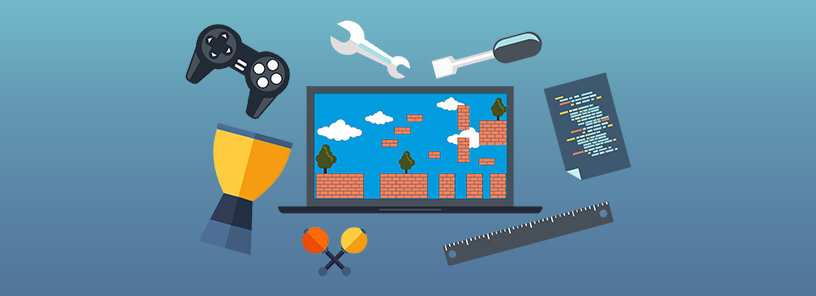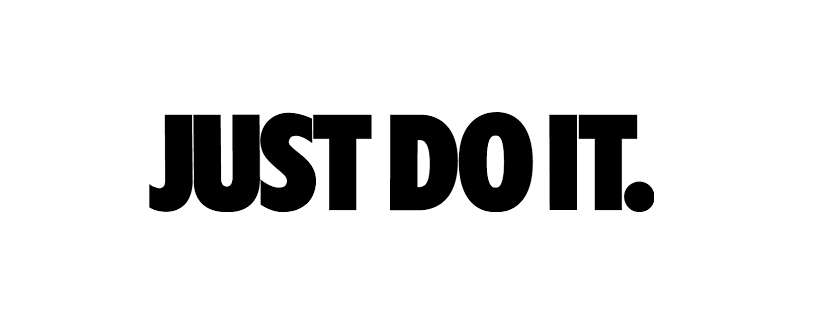
Indie games are a great mix of passion and business. Unlike the more corporate versions of the gaming world, these guys and girls strive to create something truly unique, with their own flavor, and hopefully something that resonates with audiences worldwide.
Here at Buildbox, we’ve had the opportunity to work with many indie developers, and here’s what we’ve learned over the years.
1. You must be part of the community
If you are having a hard time coming up with game ideas, then most likely this is the problem. You are probably not that involved in the indie game scene. Being active in the gaming community can really help you in more ways than one. For instance, it opens up the floodgates for brainstorming new ideas. When you’re playing new games, browsing the message boards and staying on top of the latest trends, ideas will naturally come more easily to you. As the great, Steve Jobs once said, “Creativity is just connecting things.” The more involved you are in the indie scene the easier it will be to connect different ‘ideas’ and come up with a concept that’s unique.
Another reason to get involved is to learn. The gaming community is one of the biggest resources out there for an indie developer. You can learn almost anything. Ask questions and gain valuable feedback from your peers and fans. And you can also network, building relationships or opportunities for potential collaborations later down the line.
A simple way to get started is by actually playing indie games. If you haven’t played Limbo, Stardew Valley, Monument Valley, and at least heard of Kerbal Space Program, then you need to start here. Each of these games is notable Indies and feature interesting gameplay, art style, and themes. Also, join the Indie Games subreddit and try out some new innovative games on Steam, iOS, and Android.
But of course, don’t just stop at gaming. Really get involved with the scene. Start reading online publications like Gamasutra and Indiegames.com. We recommend downloading an RSS feed reader app or extension, to help easily keep track of the latest game news. Feedly, Pocket or Flipboard are all great options. Add some of the top game development and industry news sites, and some interesting indie developer blogs to your RSS feed app. Get active on the forums as well. They are good places for learning about game design, best tools or tips to use and more. Try to turn playing, reading and browsing forums into part of your regular routine.
2. Research is absolutely key
Even if you are actively in the scene, you will still need to research before finalizing your new game idea. Always do your research. As an indie developer, it’s important to know what games are performing well on the charts, in which categories, and why. Knowing what’s already working will help lead you in the right direction. If you create the type of game that players are actively searching for, it’ll dramatically increase your odds for success.
To begin the research process, select the App Store of your preferred platform to analyze. Examine all of the games in the same category that you want to make your game. Keep an eye out for titles that appear to be from indie developers and jot them down. Analyze the various themes and trends that you notice. Write down any type that you happen to see repeatedly. Once you have a list of games that have sparked your curiosity. Download each one to further investigate. The goal is to gain deeper insight on exactly what they’re doing that’s working. So you need to go beyond simply playing the game and ‘reverse engineer’ it. This technique is extremely helpful when conducting game research.
 To start, simply grab a notepad to record all of your findings and open up the game. Pay close attention to the menu screen layout, button positions, and features. Make note of anything that stands out to you. See if you can find that ‘fun factor’ about the game that players seem to enjoy. Does it have a reward system, unlockable characters or cool gameplay concept? Also, make note of any monetization methods that it uses including Ads or banner placements.
To start, simply grab a notepad to record all of your findings and open up the game. Pay close attention to the menu screen layout, button positions, and features. Make note of anything that stands out to you. See if you can find that ‘fun factor’ about the game that players seem to enjoy. Does it have a reward system, unlockable characters or cool gameplay concept? Also, make note of any monetization methods that it uses including Ads or banner placements.
You can even break down this research into a few sections like gameplay, art style, and monetization. Each of these will follow different patterns and trends, and your goal will be to create a game that is currently trending upwards. For example, you’ll see that premium-priced games are still popular on Steam, but not as much on iOS. You’ll also notice that dark background games like Limbo and Twisted Shadow Planet aren’t as common now, so this could be something that is trending downwards. For further analysis on patterns and trends, you can use online research tools like AppAnnie, SensorTower and Google Trends.
3. Multiple concepts are great for early stages
While we all have that “one great idea”, we strongly advise people to come up with at least three concepts before starting to break ground on their new indie game. Why at least three, you ask? — Because options are a good thing. Brainstorming multiple concepts, especially in the early stages will help you nail down your core game concept more quickly. It’s also a smart strategy to use for creative thinking. You might come up with an idea that is just infinitely better. Maybe, you have a cool pixel art theme idea that you can build on by incorporating some of the features from one of your other ideas. The more options you have to pick and choose from the better.
Also, some games are harder to make than others, so you must balance risk vs feasibility. Ask yourself, “Can I really do this?” Consider your skill level, tools, resources, and time to help determine whether it’s actually worth pursuing. Remember, there’s risk in everything that you do, so choose an idea that is attainable for your skill set and resources. You want to pick a game idea that is unique but at the same time is something that you can make without any major obstacles. Whether it’s via coding, using a codeless software, or hiring a programmer your game concept must be doable. Avoid taking on more than you can handle. Nothing is worse than discovering too late, that your grand idea, just isn’t going to work. Take your time to weigh your options.
Trends are constantly changing. So some ideas might be ‘trending’ more than others. Depending on the type of game that you’re thinking of making you might need to change up your concept. Having multiple ideas on the sideline to choose from can help. Before you decide on a game idea run all three ideas by friends and family to get their feedback as well!
4. Your art is as important as your gameplay
Every successful indie game has a great stylish look. It’s one of the things that separates indie games from other types of games (like flash games, normally illustrated style games, and commercial games.) Having great artwork is important. Whether it’s a minimalist style like Geometry Dash, pixel based like Terraria or a cute style like Cuphead the art is just as vital as the gameplay. These titles are all great examples of this. Each of them has interesting gameplay but equally captivating art. This is essential. To be successful as an indie developer you can’t make your game’s artwork just an afterthought.
The art style is the first impression, and it’s important to nail that. If they don’t see something that is enticing, they will NOT give your game a chance. The art in your game is much more than simply what you see as you play the game. It’s also the icon and screenshots. All of these elements help to sell your game.
Try to make your artwork cohesive with your gameplay. It should accurately set the mood for your game. If you’re creating an action based game, your artwork might be more colorful and full of energy, for example. While a horror based game would have darker tones, colors, and a more ominous atmosphere. The art sets the mood, tells a story and makes it all come alive. In order to truly captivate players, good quality art is a must-have. Always remember that it is just as important as the gameplay mechanics.
5. Make your game unique, but familiar!
For success, create a game that is unique but still has the same familiar characteristics that players enjoy. The best way to do this is to study similar games and look for ways to model and improve. Buildbox founder, Trey Smith, has a mantra about Model and Improve that he believes all developers should follow. “Every game that you put out should have something unique or different about it, even if it’s just a small tweak,” says Smith.
When you practice the model and improve technique never copy, clone or reskin. Just take a concept or style, breakdown the elements, and come up with new ways to improve on each feature. The key is to add something special to it. Always strive to make your version of the game different. Even if it’s just a minor tweak to the game’s physics like increasing the speed, try to make improvements wherever possible. When you successfully accomplish this, you’ll have a completely new game that’s better than the original concept.
Modeling and improving is the secret technique that most of the top successful game developers and even entrepreneurs practice.
6. Your time is extremely valuable
Time is as important as money when creating a game. In fact, your time IS money. Time is a valuable resource. Your time could be spent doing anything in the world, so don’t waste it. Remember when you’re making games, you’re creating a product. It’s a business and managing your time well is critical for success. If you’re like many indie developers than you’re part-time and probably working a full-time job during the week. If this is you than the amount of time that you have to devote to game creation is limited. Getting sidetracked or overwhelmed can be a huge setback, costing you valuable time and money. To avoid this, it’s important to have a clear-cut plan and schedule before you start the development process. Take some time to draw out a solid plan. Create a schedule that works best for you as an indie developer.
There are a few simple tips to follow when you’re doing this. First, examine your current schedule. Decide how many hours or days you want to dedicate to focusing on your project. Then list the tasks that need to be completed and schedule them by priority. Try not to overload your schedule. Make realistic deadlines. Also, add in time to relax and pencil in breaks to avoid burnout. A great rule to follow is to focus primarily on what you can do and outsource the rest. So, if you have neither the extra time nor artistic talent to create game art, instead of wasting hours or days trying to figure it out, buy the art or hire someone to make it for you. Concentrate on the tasks that you know you can complete and outsource the remaining.
Also, the biggest reason a game bombs is not because people don’t like it … but because it’s never released! There are more unreleased games in eternal development than the ones that get published.
7. Don’t fall victim to the unfinished monster
Most games that people start working on do not get released. In fact, for many indie developers, their first game is the hardest to make. It’s easy to fall victim to the ‘unfinished monster’ and end up abandoning a game completely. Don’t let this happen to you. Remember, your first game is more of a learning experience than anything else. With each game create you’ll become a better developer and more skilled. Avoid putting unrealistic expectations on yourself or your game when you’re just starting out.
Like the famous Nike slogan, “Just Do It!” The secret to getting things done is to just do it. You’ll learn as you go. No game is ever perfect, especially if it’s your first one. There will be mistakes, weird bugs, and things that could be greatly improved. But you’ll never get to the point that you want to if you never finish your first game. Being overly ambitious and trying to create a complex game with every possible feature will only result in you becoming overwhelmed and eventually giving up on your game altogether.
 To make sure you don’t fall victim to this early demise, focus on creating games that are easily manageable by your team. Try to start small. Remember you’re still learning how to conquer the game business. So, avoid going over budget and stay organized. Use team management apps like Teambox, Dropbox, Slack, Basecamp, or Trello to help keep your team focused and on track.
To make sure you don’t fall victim to this early demise, focus on creating games that are easily manageable by your team. Try to start small. Remember you’re still learning how to conquer the game business. So, avoid going over budget and stay organized. Use team management apps like Teambox, Dropbox, Slack, Basecamp, or Trello to help keep your team focused and on track.
If it’s just you, then make sure you’re using a development platform that is known for being rapid (*cough* Buildbox *cough*) and also keep the game simple so it can be completed in a timely manner by a single person. Simple games are excellent for beginners. It’s a great starting point because those type of games seldom requires a lot of resources or time to create.
And remember, contrary to popular belief, you don’t have to work on a game forever for it to be good! David Reichelt created Color Switch in only a week!
“When I thought of the idea for Color Switch, 30 minutes later I had a demo in the software”, stated Reichelt.
8. When you’re done, you are not done!
We have a rule here at Buildbox games: The game is not ready to release until we hate it. Why? Because it’s very hard to make a TRULY polished game. A game that looks, plays and feels fantastic. A game that doesn’t show any bugs, clipping or bad level design. And by the time you’ve done this … by the time you’ve made it perfect (or as close to it as you can) … it’s nearly impossible to like the game at that point. And that is when we know it’s ready.
Making sure your game is polished is a really important final step to take before releasing your game into the world. The objective is to really look over the details of your game and search for any areas that are in need of improvement. During the polishing phase, it’s critical that you check and make sure your art style is consistent. Having an inconsistent design is an easy and very noticeable mistake to make. Check to ensure that all of your game’s graphics and screens appear to be cohesive. You want to avoid having conflicting art styles within your game. Look for any signs of slowness in your game’s overall performance especially with loading screens and animation transitions.
Testing is another critical step to ensuring that your game is polished. Always test your game with multiple people who can judge it objectively. Get play testers, have friends and family members test it out and give feedback. When you’re doing this, be sure to ask everyone to be as brutally honest as possible. You’re searching for flaws, not praise (although, a little bit now and then won’t hurt). Try to get as much honest feedback as you can. Then set aside some time to make the necessary tweaks.
9. To solo or not to solo?
As an indie developer, there’s really only two routes that you can take – releasing your game solo or working with a publisher. Each of these options has their share of pros and cons. When you release your own game you have total control of every aspect of your game and its marketing efforts. The downside to this is that you’re on your own. It’s up to you to figure out how you’re going to promote your game. Getting your game noticed can be a lot of hard work but it’s doable. In the article titled ASO is Dead, Buildbox founder, Trey Smith, shares some of the top strategies that are currently working right now in the mobile market.
If you decide not to do it on your own, then you have to go the publisher route. This is the option that we use the most to help get traffic to our games. When you work with a publisher they handle all of the marketing efforts for your game. The biggest benefit to using a publisher is not having to stress out or worry about how you’re going to promote your game and get it noticed. You only have to focus on the creating your game. However, the downside to getting published is that you have to meet and follow their guidelines. Remember every publisher differs in how they do things.
10. Market yourself like a champ
If you do go at it alone, then you really want to focus on the feature teams for Steam, Apple or Android. Luckily, they all really like indie games so it’s very possible. The key here is to really start working the indie media. It’s a much smaller scene than the regular gaming world, so the best way to do this is to let people follow along with your development. Post development screenshots on touch arcade and your Facebook. Build a community and pitch your development story to indie game journalists. Make videos, put them on YouTube, and share them with video game journalists. Use Kickstarter solely for the marketing advantages. Heck, you can even start a blog and walk people through the full development cycle like Notch did with Minecraft and post about it on Reddit. It worked out pretty well for him ;)
The key here is to start very early if you want to do the marketing yourself without a publisher. Your goal should be to build a community that is excited about the release of your game way before it’s actually available. You really can’t start too early.
I hope this helps you with your indie game creation, be sure to share any additional tips you might have with us in the comments section below!









[…] Источник: https://www.buildbox.com/10-things-indie-developers-should-do/ […]
Great article – knew some of it already, really needed to hear the rest of it. :)
Thanks, Heather! :)
I really needed to read this and its very helpful to me. Appreciate all the info and support from the BB team. Cheers Tiana :)
Thanks Grace :) Glad you found it helpful!
hey!mam i am fan of yours i just love you
That’s awesome Bilal! Thanks so much. :)
Great article. The main issue I have is just finding the time to focus on the gaming. I really appreciate all the info provided by you and the rest of the bb team
How do you publish your video game on your own website and sell it without windows, amazon, and other groups? Can you speak on that?
[…] our last article, called ‘10 Things Indie Game Developers Should Know’, we mention the importance of networking for indie developers. Similar to the way David was able […]
Bravo Tania!
[…] but it is not okay when everything is almost identical. As in one of the recent post on “10 Things Every Indie Game Developer Should Know“, point 5, you should be making your game unique, but familiar! But not that familiar right? […]
Really helpful. Thanks Tiana!
You’re welcome Zack :) thanks!
tiana would you like to help me please
Hi Divyansh, for help email our team directly at support@buildbox.com
This is awesome. Thank you Tiana. Thank you Trey.
Thanks Sani :) we’re glad you enjoyed it.
Thanks Tiana, great info.
Glad you found it helpful, JD :)
Excellent article. Packed with great advice and well written. I got more value out of this than the gaming book I’m reading!
That’s awesome, Michael. Thanks!
Notable things. Thanks Tiana.
Glad you liked it :)
Nice one, Tiana :)
Nice guide